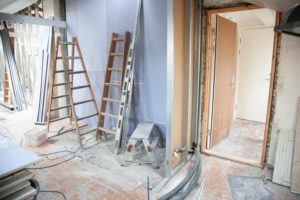
When purchasing a home in Ontario, it’s crucial to consider not only the purchase price but also the additional expenses associated with closing the deal. These costs, known as closing costs, can significantly impact your overall budget. In this blog post, we will delve into the world of real estate closing costs in Ontario, shedding light on the various expenses involved and helping you navigate this crucial aspect of homeownership.
Land Transfer Tax:
One of the most significant closing costs in Ontario is the land transfer tax (LTT). This tax is based on the purchase price of the property and is payable by the buyer. The amount varies depending on the property’s location, with additional rebates available for first-time homebuyers.
Legal Fees and Disbursements:
Engaging a lawyer or notary to handle the legal aspects of your real estate transaction is essential. Legal fees cover the professional services provided, including document preparation, title searches, and reviewing the terms of the agreement. Additionally, there are disbursements, which include costs such as land title registration fees and other administrative expenses.
Home Inspection:
While not mandatory, a home inspection is highly recommended to identify any potential issues with the property. The cost of a professional home inspection should be factored into your closing costs. It provides peace of mind and helps you make informed decisions about the purchase.
Title Insurance:
Title insurance protects you against any unforeseen issues related to the property’s title, such as ownership disputes or liens. While not mandatory, many lenders require title insurance, and it is a wise investment to safeguard your ownership rights. The cost is typically a one-time premium paid at closing.
Mortgage Fees:
If you are obtaining a mortgage to finance your home purchase, there may be associated fees. These can include an application fee, appraisal fee, mortgage insurance (if applicable), and lender administration fees. It’s essential to review and understand the fees associated with your specific mortgage arrangement.
Property Insurance:
Before closing, you will need to arrange property insurance to protect your investment. The cost of property insurance varies depending on the value of the property, location, and the coverage options chosen. Be sure to obtain insurance quotes and factor this expense into your closing costs.
Adjustments and Prorated Expenses:
At the time of closing, there may be adjustments made for certain expenses. These include property taxes, utilities, and condominium fees (if applicable). Adjustments ensure that each party pays their share of these expenses based on the closing date.
Conclusion:
Closing costs are an essential consideration when purchasing a home in Ontario. Being aware of the various expenses involved will help you budget effectively and avoid any surprises at the closing table. Understanding costs such as land transfer tax, legal fees, home inspection, title insurance, mortgage fees, property insurance, and adjustments will empower you to make informed financial decisions as you embark on your homeownership journey. Consulting with professionals, such as real estate agents and lawyers, can provide further guidance and ensure a smooth closing process.

